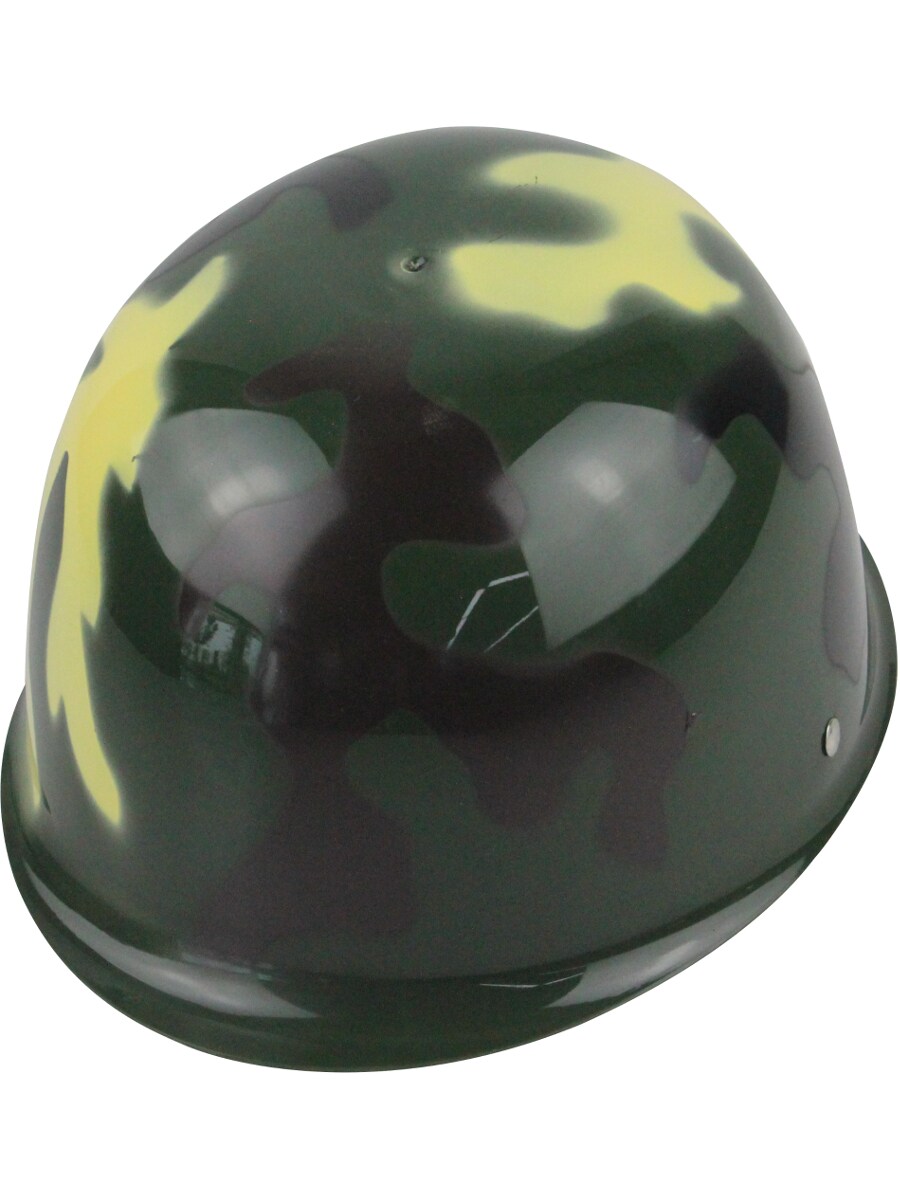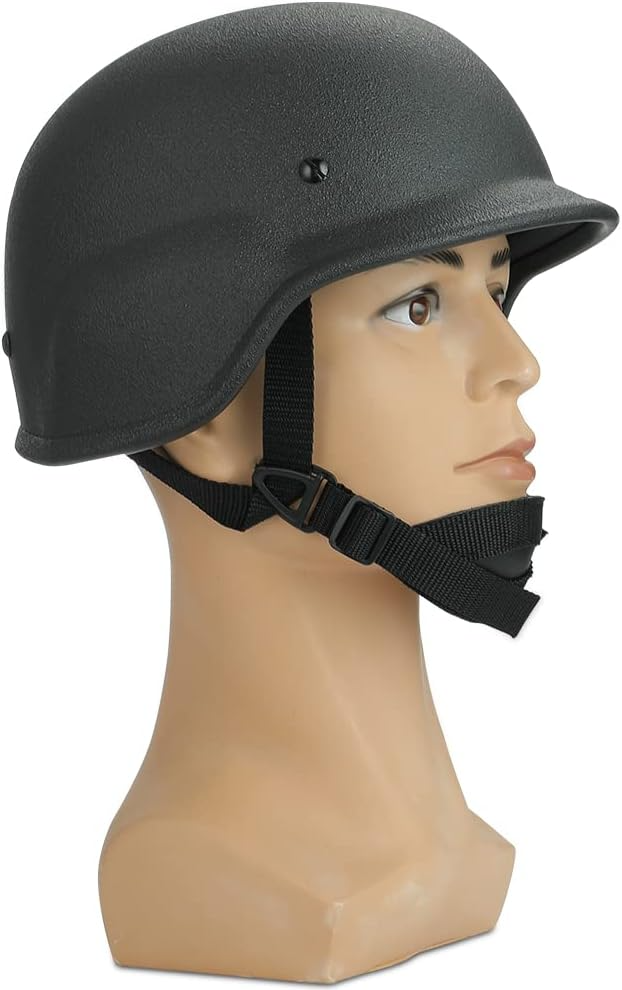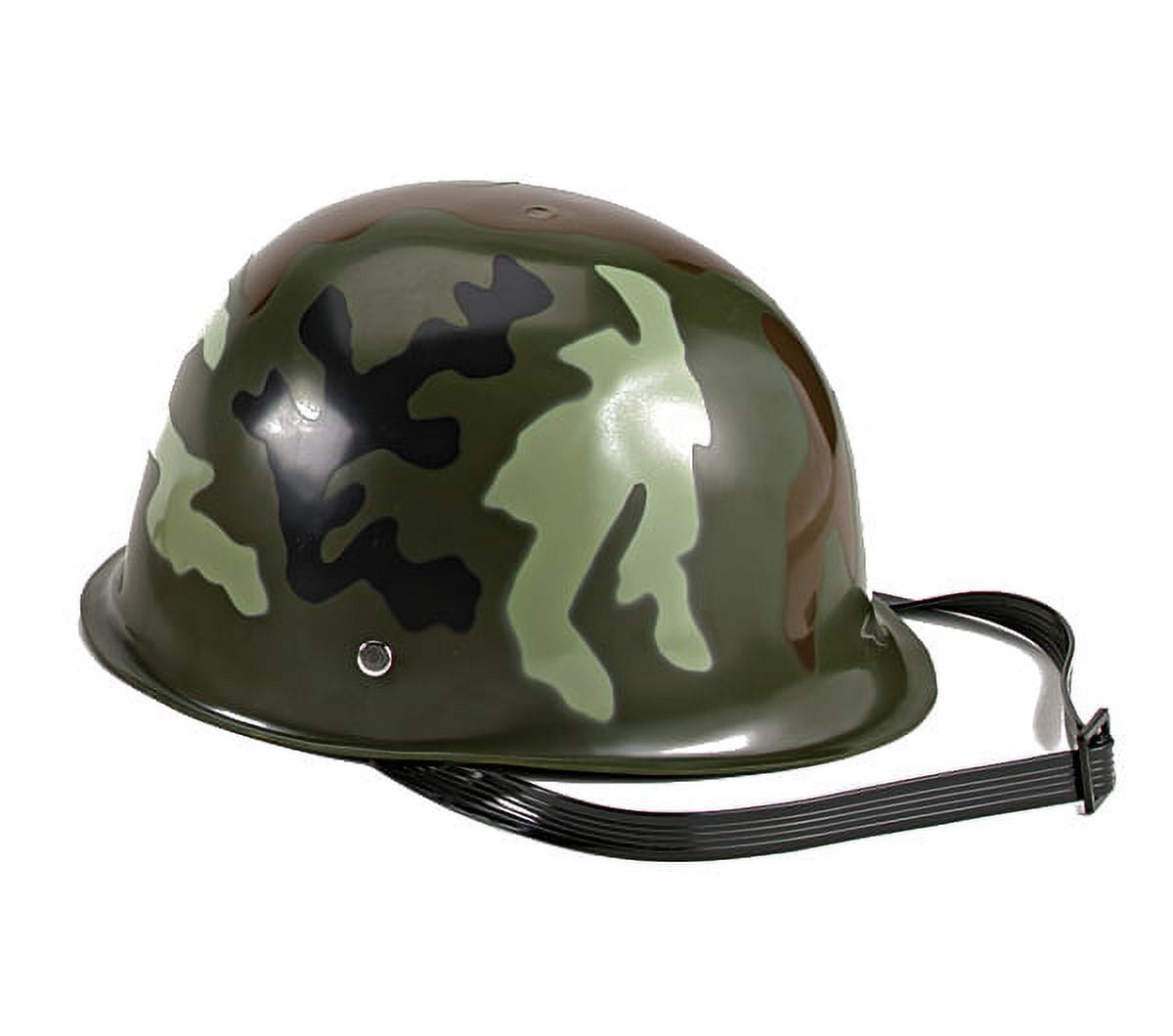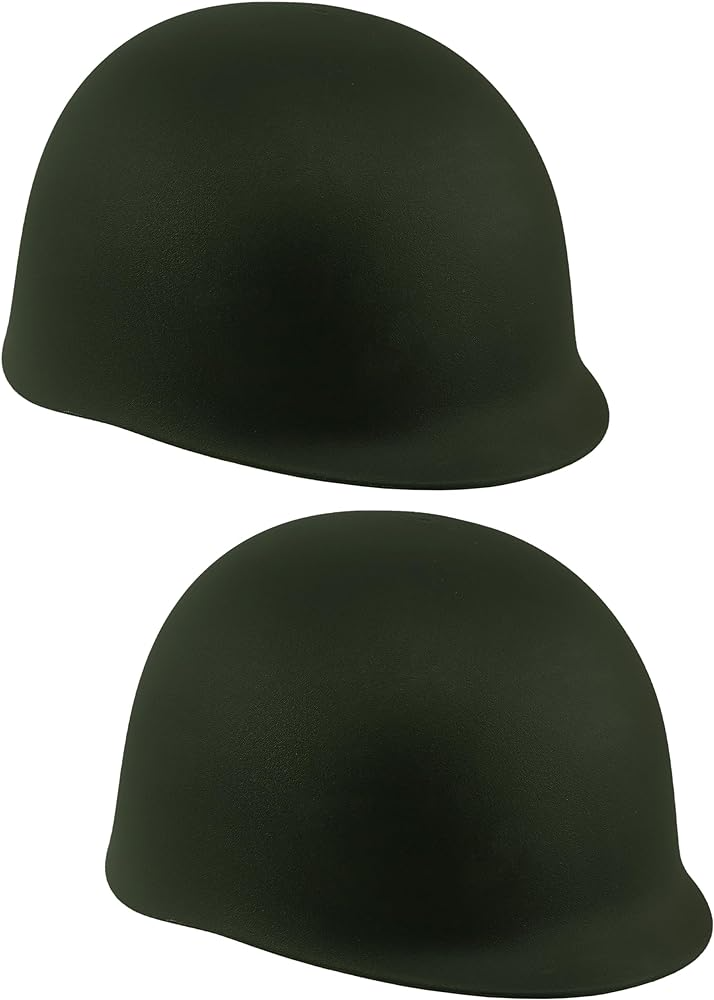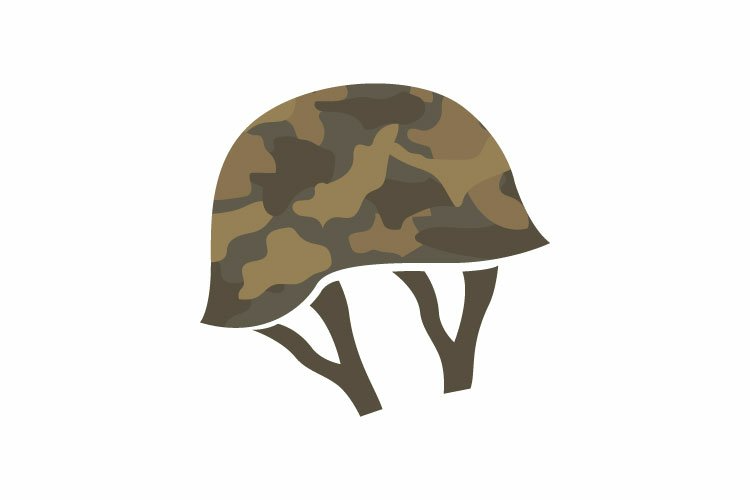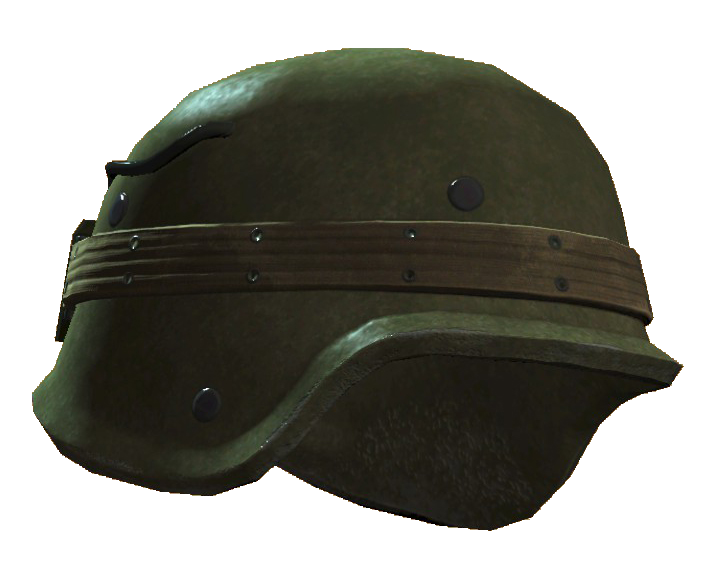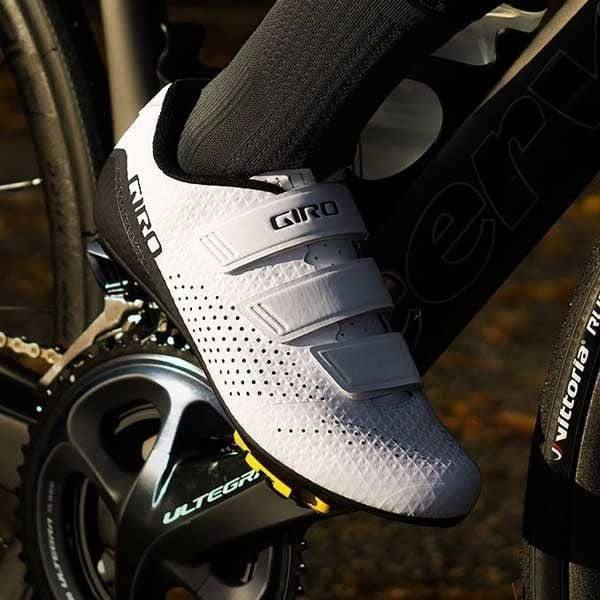Army helmets have long been integral to military gear, serving the critical purpose of protecting soldiers’ heads in combat. Over decades, advancements in design and materials have transformed these helmets, making them more effective and reliable. This article delves into the history, features, benefits, and future trends of army helmets, providing an in-depth understanding of their importance in military operations.
Introduction to Army Helmets
The Historical Importance
Army helmets have a long and storied history, dating back to ancient times. Early models, made from bronze, iron, and other metals, provided rudimentary protection against weapons of the era. Roman soldiers wore helmets known as “galea,” which offered basic defensive capabilities while symbolizing the might and discipline of the Roman legions.
Throughout the centuries, helmet designs evolved in response to advancements in weaponry and changing battlefield tactics. By the Middle Ages, knights donned iconic steel helmets to protect against sword strikes and arrows. These helmets became ornate and specialized, reflecting the technological and artistic ingenuity of the period.
The modern concept of military helmets began to take shape during World War I. Soldiers faced new threats from machine guns, artillery, and shrapnel, necessitating more effective protective gear. The steel helmets introduced during this time marked a significant leap in helmet design, offering enhanced protection and durability. This era laid the groundwork for subsequent innovations in military headgear.
Modern Innovations and Standards
Modern army helmets have benefited immensely from advances in materials science and engineering. Today’s helmets are no longer just metal shells but sophisticated pieces of equipment designed to offer maximum protection and functionality. The introduction of materials like Kevlar and advanced composites has dramatically improved the effectiveness of modern helmets.
These helmets not only protect against ballistic threats but also provide additional capabilities. Many contemporary models are integrated with communication systems, night vision mounts, and modular attachments. They are subject to rigorous testing and standards set by military organizations to ensure their reliability and effectiveness in various combat scenarios.
The ongoing evolution of army helmets reflects the military’s commitment to enhancing soldier safety and operational effectiveness. By incorporating cutting-edge technology and materials, modern helmets continue to meet the ever-changing demands of the battlefield.
Key Features of Modern Army Helmets
Advanced Materials and Construction
One of the defining features of modern army helmets is the use of advanced materials. Traditional steel helmets have been largely replaced by those made from Kevlar, aramid fibers, and high-strength composites. These materials offer superior ballistic protection while being significantly lighter than steel.
Kevlar, developed by DuPont, revolutionized helmet design. Its high tensile strength and energy-absorbing properties make it ideal for ballistic protection. Helmets made from Kevlar can effectively stop bullets and shrapnel, reducing the risk of head injuries. Additionally, Kevlar’s lightweight nature enhances soldier mobility and comfort, allowing for longer periods of wear without fatigue.
From a construction standpoint, modern helmets are designed to distribute impact energy across the surface, reducing the force transmitted to the head. Advanced manufacturing techniques, such as molding and layering, ensure that helmets meet stringent ballistic and impact resistance standards. These construction methods enhance both the effectiveness and durability of the headgear.
Modular and Customizable Design
Another significant advancement in modern army helmets is their modular and customizable design. Unlike traditional helmets with fixed features, modern helmets come with modular components that can be easily attached or removed based on mission requirements. This adaptability ensures that soldiers are equipped with the necessary tools for specific situations.
Modular attachments include visors, night vision mounts, communication devices, and protective face shields. These accessories enhance situational awareness and operational capabilities, allowing soldiers to perform their duties more effectively. For instance, night vision mounts enable the use of night vision goggles, providing a tactical advantage during low-light operations.
Customizable fitting systems, such as adjustable padding and suspension systems, ensure that helmets provide a secure and comfortable fit for different head sizes and shapes. This customization reduces movement and enhances stability, minimizing discomfort and distraction during critical missions. The emphasis on modularity and customization reflects the military’s focus on versatility and efficiency.
Enhanced Comfort and Ergonomics
Comfort and ergonomics are crucial factors in the effectiveness of army helmets. Modern helmets are designed to provide a comfortable fit, reducing fatigue and enhancing soldier performance. This focus on ergonomics is evident in features like adjustable suspension systems, padded interiors, and ventilation.
Adjustable suspension systems allow soldiers to customize the fit of their helmets, ensuring that they sit securely and evenly on the head. Proper fit reduces movement and enhances stability, improving both comfort and protection. Padded interiors provide cushioning, reducing pressure points and enhancing overall comfort during extended wear.
Ventilation systems are another important ergonomic feature. Modern helmets incorporate vents and airflow channels that promote air circulation, preventing overheating and discomfort. This is particularly important in hot and humid environments, where proper ventilation can make a significant difference in soldier comfort and performance.
The emphasis on comfort and ergonomics in modern helmet design ensures that soldiers can focus on their missions without being distracted by discomfort or fatigue. These features enhance both operational effectiveness and overall well-being.
Benefits of Using Modern Army Helmets
Superior Protection and Safety
One of the primary benefits of using modern army helmets is the superior protection and safety they provide. Advanced materials and construction techniques ensure that these helmets can effectively stop bullets, shrapnel, and other ballistic threats. This protection is crucial in safeguarding soldiers’ lives and reducing the risk of head injuries.
Kevlar and other high-strength composites used in modern helmets offer exceptional ballistic resistance. They are designed to absorb and distribute impact energy, minimizing the force transmitted to the head. This reduces the risk of concussions and traumatic brain injuries, ensuring that soldiers remain functional and alert during combat.
In addition to ballistic protection, modern helmets also offer protection against blunt force trauma. Reinforced shells and advanced padding systems absorb and dissipate impact energy, reducing the risk of head injuries from falls, collisions, and other physical impacts. This comprehensive protection enhances soldier safety in various combat scenarios.
Enhanced Functionality and Versatility
Modern army helmets offer enhanced functionality and versatility, providing soldiers with tools and features that improve operational efficiency. The modular design allows for quick and easy attachment of accessories, such as night vision goggles, communication systems, and face shields. This adaptability ensures that soldiers are equipped with the necessary tools for specific missions.
Integrated communication systems enhance coordination and situational awareness, allowing soldiers to communicate more effectively with their team. Night vision mounts provide a tactical advantage in low-light conditions, improving visibility and target acquisition. These features enhance soldier performance and operational capabilities, contributing to mission success.
The versatility of modern helmets also extends to their use in various environments and scenarios. Whether operating in urban, jungle, or desert settings, soldiers can customize their helmets with the appropriate accessories and configurations. This adaptability ensures that they are prepared for the challenges and demands of different combat environments.
Improved Soldier Morale and Confidence
The safety and functionality provided by modern army helmets significantly improve soldier morale and confidence. Knowing that they are equipped with reliable and effective protective gear gives soldiers peace of mind and allows them to focus on their missions without undue concern for their safety.
The improved comfort and fit of modern helmets also contribute to better morale. Soldiers are less likely to experience discomfort or fatigue, allowing them to perform at their best for extended periods. The emphasis on ergonomics and customization ensures that helmets meet individual needs, enhancing overall well-being and performance.
In addition to physical protection, the psychological benefits of using advanced helmets cannot be overlooked. The sense of security and confidence provided by reliable protective gear plays a crucial role in maintaining soldier motivation and effectiveness. Modern helmets, by offering superior protection and functionality, contribute to the overall resilience and capability of military personnel.
Future Trends in Army Helmet Design
Integration of Smart Technology
The future of army helmet design is likely to see increased integration of smart technology. Advanced sensors, communications equipment, and augmented reality (AR) capabilities are being explored to enhance situational awareness and operational efficiency. These innovations have the potential to revolutionize how soldiers interact with their environment and each other.
Smart helmets equipped with sensors can monitor vital signs, detect environmental threats, and provide real-time data to soldiers and command units. This information can be crucial for making informed decisions and responding to changing battlefield conditions. The integration of AR can overlay digital information on the physical environment, providing soldiers with enhanced navigation, target identification, and mission planning tools.
Communication systems will also see advancements, with more seamless integration of audio and visual communication channels. This will improve coordination and information sharing, ensuring that soldiers have access to critical information in real-time. The continued development of smart technology promises to enhance the capabilities and effectiveness of future army helmets.
Lightweight and Adaptive Materials
Advancements in materials science will continue to play a significant role in the evolution of army helmets. Researchers are exploring new materials that offer superior protection while being lighter and more flexible. These materials will further enhance the comfort and mobility of soldiers, reducing fatigue and improving overall performance.
Nano-engineered materials, for example, have the potential to provide exceptional ballistic resistance with minimal weight. These materials can withstand high-velocity impacts while remaining flexible and lightweight. The development of adaptive materials that can change properties in response to environmental conditions is another exciting area of research.
Lightweight and adaptive materials will also contribute to the modularity and customization of future helmets. Soldiers will be able to configure their helmets with specific materials and features based on mission requirements, ensuring optimal performance and protection. The focus on innovative materials will drive the next generation of army helmet design.
Sustainability and Environmental Impact
Sustainability and environmental considerations will increasingly influence the design and production of army helmets. The military is recognizing the importance of reducing environmental impact and adopting more sustainable practices. Future helmet designs will incorporate eco-friendly materials and manufacturing processes, minimizing their carbon footprint.
Recycling and reusing materials will play a crucial role in sustainable helmet production. Manufacturers are exploring ways to repurpose existing materials and create biodegradable components. The use of renewable resources and energy-efficient manufacturing techniques will further contribute to sustainability efforts.
In addition to environmental benefits, sustainable practices can also enhance the durability and reliability of helmets. High-quality materials and efficient production processes ensure that helmets meet rigorous standards while minimizing waste. The focus on sustainability and environmental impact reflects the military’s commitment to responsible innovation and conservation.
Practical Considerations for Soldiers and Militaries
Selecting the Right Helmet
Selecting the right helmet is crucial for ensuring optimal protection and performance. Soldiers and military units must consider various factors, such as threat level, mission requirements, and environmental conditions. The right helmet offers the necessary protection, functionality, and comfort for specific scenarios.
Assessing the threat level involves understanding the type of ballistic and impact threats soldiers may face. Helmets should meet appropriate ballistic standards and provide adequate protection against the expected dangers. Modular capabilities and accessory compatibility allow for customization based on mission-specific needs.
Comfort and fit are also important considerations. Helmets with adjustable suspension systems and padded interiors offer a secure and comfortable fit, reducing fatigue and enhancing performance. Ventilation and ergonomic design features ensure that soldiers can wear helmets for extended periods without discomfort.
Maintenance and Care
Proper maintenance and care of helmets are essential for ensuring their effectiveness and longevity. Regular inspection and cleaning help identify and address any wear or damage. Soldiers should follow manufacturer guidelines for cleaning and maintaining their helmets, using appropriate materials and methods.
Inspecting helmets for cracks, dents, or other signs of damage is crucial for maintaining protection. Damaged helmets may not provide adequate protection and should be repaired or replaced as needed. Regularly checking and replacing modular components, such as visors and padding, ensures that helmets remain functional and comfortable.
Proper storage is also important for helmet care. Helmets should be stored in a cool, dry place away from direct sunlight and extreme temperatures. Using storage cases or covers protects helmets from dust and physical damage. By following proper maintenance and care practices, soldiers can ensure the reliability and effectiveness of their helmets.
Cost and Budget Considerations
Cost and budget considerations play a significant role in selecting and procuring army helmets. Modern helmets with advanced materials and technology can be expensive, and military units must balance cost with the need for high-quality protective gear. Cost-effective solutions that meet safety and performance standards are essential for responsible budget management.
Bulk purchasing and negotiated contracts with suppliers can help reduce costs. Standardizing helmet models across units simplifies logistics and maintenance, providing economies of scale. Military units should also consider the long-term benefits and savings provided by high-quality helmets, such as reduced medical costs and improved soldier performance.
Investing in quality protective gear is a critical component of operational readiness and soldier safety. The cost of advanced helmets should be weighed against the potential risks and benefits, ensuring that soldiers are equipped with reliable and effective protection. Cost management strategies ensure that military units can obtain high-quality helmets within budget constraints.
Conclusion
The Ongoing Evolution of Army Helmets
Army helmets have undergone significant evolution, transitioning from simple metal shells to advanced protective gear with cutting-edge technology. The historical importance of helmets reflects their critical role in safeguarding soldiers’ lives and enhancing operational effectiveness. Modern innovations in materials, design, and functionality continue to drive the evolution of army helmets.
Modern helmets offer superior protection, functionality, and comfort, providing soldiers with the tools they need to perform their duties effectively. Advanced materials like Kevlar and modular designs enhance ballistic resistance and versatility, ensuring that helmets meet the demands of contemporary combat scenarios. The emphasis on ergonomics, customization, and smart technology reflects the military’s commitment to innovation and soldier welfare.
Looking to the future, advancements in smart technology, lightweight materials, and sustainability will continue to shape the design and capabilities of army helmets. The integration of sensors, communication systems, and augmented reality will enhance situational awareness and operational efficiency. Sustainable practices will reduce environmental impact and promote responsible innovation.
For soldiers and military units, selecting the right helmet involves assessing threat levels, mission requirements, and individual needs. Proper maintenance, care, and cost management ensure that helmets remain effective and reliable. The ongoing evolution of army helmets underscores their enduring significance in military operations and their role in safeguarding those who serve.
Investing in high-quality army helmets is an investment in soldier safety, operational readiness, and mission success. The continued advancement of helmet design and technology reflects the military’s commitment to protecting its personnel and achieving excellence on the battlefield.
